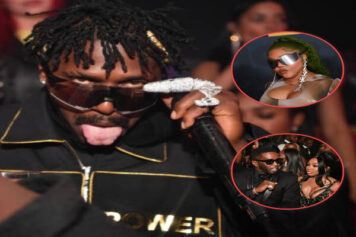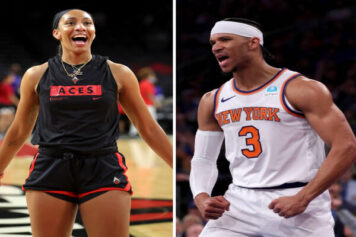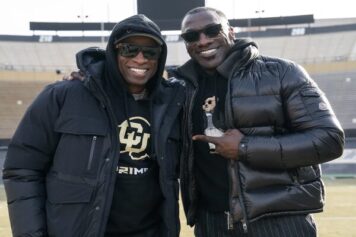Black hair is at the center of yet another controversy because white people apparently cannot deal with non-mainstream cultural expression.
In an unprecedented overstep, New Jersey wrestling referee Alan Maloney used his power to enforce his personal views on Buena High School wrestler Andrew Johnson to compete in a match when he warned him that he had to cut his dreadlocks or forfeit a match.
https://twitter.com/shaunking/status/1076132659661848583
The benefit of the doubt is something black people are dishing out less and less nowadays. However, the faux ambiguity that the mainstream shamelessly cowers behind on matters of interpersonal and institutional racism makes it difficult for marginalized groups to properly petition the powers that be for remedies for these societal maladies.
People are racist toward one another in many aspects of our daily lives. Most of the time, those against whom these every day micro and medium-aggressions are manifested simply shrug them off. Unless, of course, there’s some sort of physical interaction at play.
However, institutional racism is something that simply cannot be shrugged off as easily. It is a constant, static faith-drain for those who simply want to be allowed to pursue their version of the American dream unencumbered by the mainstream interpretation of everything from their clothing, manner of speech, cultural pursuits and physical appearance.
This paradigm is taking place all across the nation, and hair has historically been used worldwide as a way to force indigenous peoples into conformance with the mainstream thought processes.
In August, a 6-year-old boy was sent home from a Florida Catholic school because of his dreadlocks. Just this month, a teacher in New Mexico cut a Native American student’s hair during class and also called another student a “bloody Indian”.
Hair is one of the most universal expressions of culture in the world. This is why it is unbearable for white supremacists to be in the presence of an individual so comfortable in their own non-mainstream culture.
It is an affront to them.
What is it to the white supremacist to wield his power in such a petty manner as Maloney? Because a racist will get in where he fits in as far as heaping misery on people of color in America, and abroad.
In the Louisiana of the 1700, Black women were subjected to the Tignon Laws, which stated that they had to wear head wraps because their beautiful hairstyles upset white women and attracted white men. True shit.
The hair debate within the African-American community is actually an internalized manifestation of this as well. Good hair, bad hair, curly hair, kinky hair, nappy hair, straight hair. Best believe the societal pressures of white supremacy are what made the descendants of African slaves that live in America today into arguably the most hair obsessed people in the world.
When someone who is a racist does something like what Maloney did, the effects are three fold. They traumatize the individual who this fraudulent use of power is being perpetrated upon, warn other black and brown individuals of the repercussions of being too proud, and they embolden other like-minded individuals to abuse their power in a similar manner.
The realization that Maloney has a documented case of racism against him is of no big surprise, and over an argument about wine? His cowardly pettiness apparently knows no bounds.
As reported by NJ.com in 2016, Maloney and several of his colleagues were at a gathering following a youth tournament in Wildwood, NJ. Another official, a black man named Preston Hamilton, and Maloney got into a disagreement about homemade wine when the latter poked his finger in Hamilton’s chest and called him the “n-word”.
That’s when Maloney found out just what an “n-word” would get him, body slammed to the floor. He’s lucky Hamilton, who clearly had the strength advantage to slam him, didn’t pound him out. The fact that they were surrounded by colleagues likely saved his ass.
After six months of deliberation, the New Jersey Wrestling Officials Association ruled that they had no jurisdiction over what occurred that night. Maloney issued an apology, and that was supposedly that. That’s when we get back to the notion of mainstream ambiguity, faux or otherwise, toward how interpersonal racism becomes institutionalized.
One has to wonder how many times has Maloney’s personal views led to “blown” or “missed” calls that allowed a white wrestler to defeat a black one?
But what is discernible now based upon the information that is available to us is that Alan Maloney overstepped his authority in the case of threatening Jackson with forfeiture if he didn’t cut his hair. And that overstep was based on his view of what is and isn’t acceptable in a wrestling match.
Telling wrestler Andrew Johnson to cut his dreads or he wouldn't be able to compete is horrendous. It's racism, intimidation, ignorance, disrespect, embarrassment and belittling all rolled into one (🎥@MikeFrankelSNJ )
A thread.pic.twitter.com/iOg6vACYZ5
— The Shadow League (@ShadowLeague) December 21, 2018
Those views that aren’t in any wrestling guide book. He simply used his power to enforce his racist views on a high school kid.
When an institution is faced with a clear case of racism, and turns the other eye, it becomes an enabler of that behavior and are thus complicit in deeming a racist’s interpersonal views as acceptable by said institution’s governing body.
They’re all then made racist by proxy. Boom, and that’s how easily institutional racism happens.
(Update:) The NJSIAA, the state’s governing body for high school sports, recommended that Alan Maloney not be assigned to any events until the mater has been reviewed thoroughly.
Also, the organization referred the matter to the New Jersey Division on Civil Rights in correspondence with the state’s sportsmanship policy.
In addition, the organization referred the incident to the New Jersey Division on Civil Rights in correspondence with the state’s sportsmanship policy. Leland Moore, a spokesman for the Attorney General’s office, confirmed Friday the Division on Civil Rights has opened an investigation into the matter.
According to CBS, the rules for hair in NJ high school wrestling are as follows.
- hair shall not extend below the top of a shirt collar
- hair shall not extend below earlobe level
- hair shall not extend below the eyebrows
The rules further state that if Johnson did not cut his hair and lacked the right equipment to keep his hair back, the referee may have been correct, according to Schools Superintendent David Cappuccio states in part,
“The student athlete made the decision to cut his hair… at that moment… to avoid forfeiture. No school/district staff member influenced the student into making this decision.”



